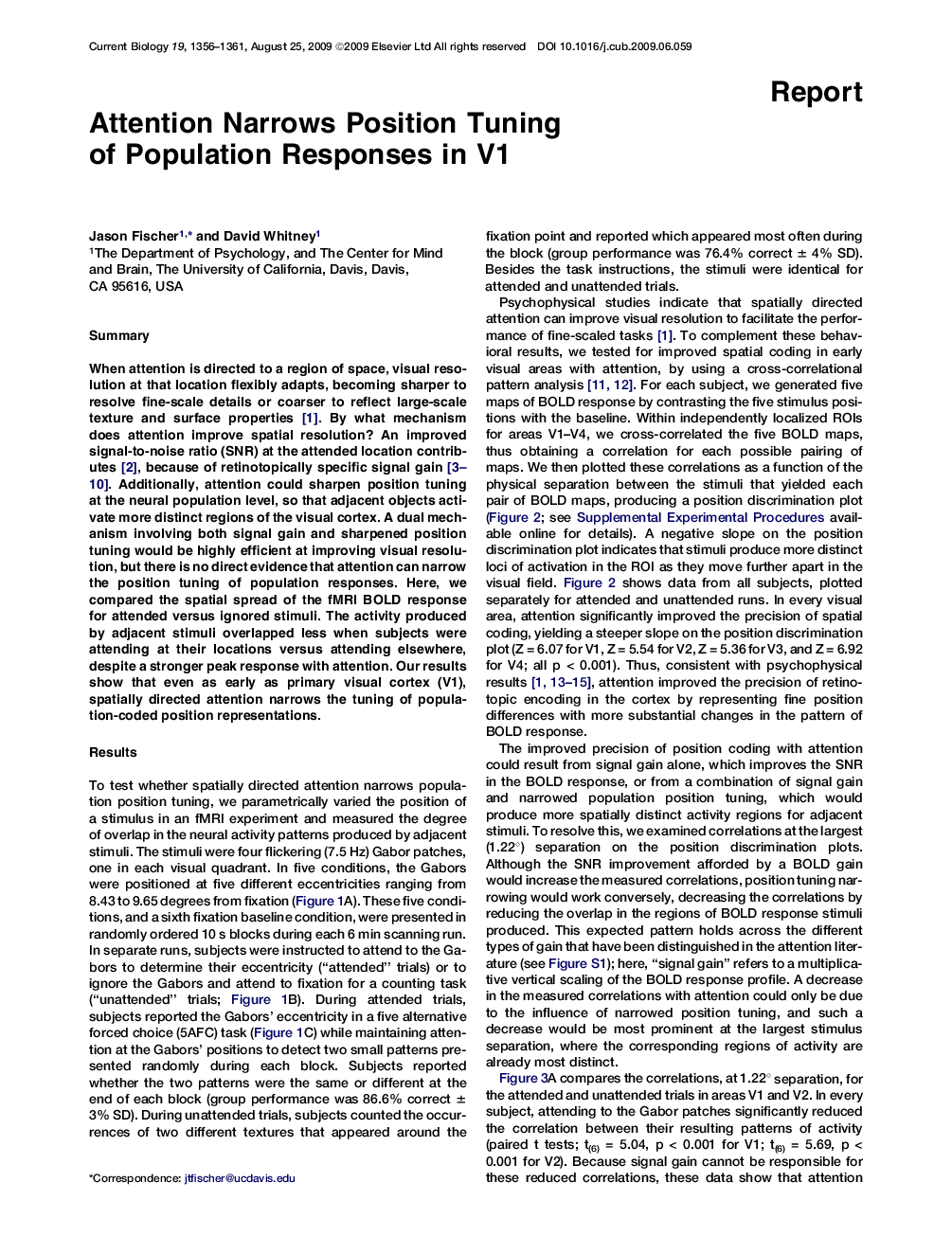| Article ID | Journal | Published Year | Pages | File Type |
|---|---|---|---|---|
| 2043389 | Current Biology | 2009 | 6 Pages |
SummaryWhen attention is directed to a region of space, visual resolution at that location flexibly adapts, becoming sharper to resolve fine-scale details or coarser to reflect large-scale texture and surface properties [1]. By what mechanism does attention improve spatial resolution? An improved signal-to-noise ratio (SNR) at the attended location contributes [2], because of retinotopically specific signal gain 3, 4, 5, 6, 7, 8, 9 and 10. Additionally, attention could sharpen position tuning at the neural population level, so that adjacent objects activate more distinct regions of the visual cortex. A dual mechanism involving both signal gain and sharpened position tuning would be highly efficient at improving visual resolution, but there is no direct evidence that attention can narrow the position tuning of population responses. Here, we compared the spatial spread of the fMRI BOLD response for attended versus ignored stimuli. The activity produced by adjacent stimuli overlapped less when subjects were attending at their locations versus attending elsewhere, despite a stronger peak response with attention. Our results show that even as early as primary visual cortex (V1), spatially directed attention narrows the tuning of population-coded position representations.
